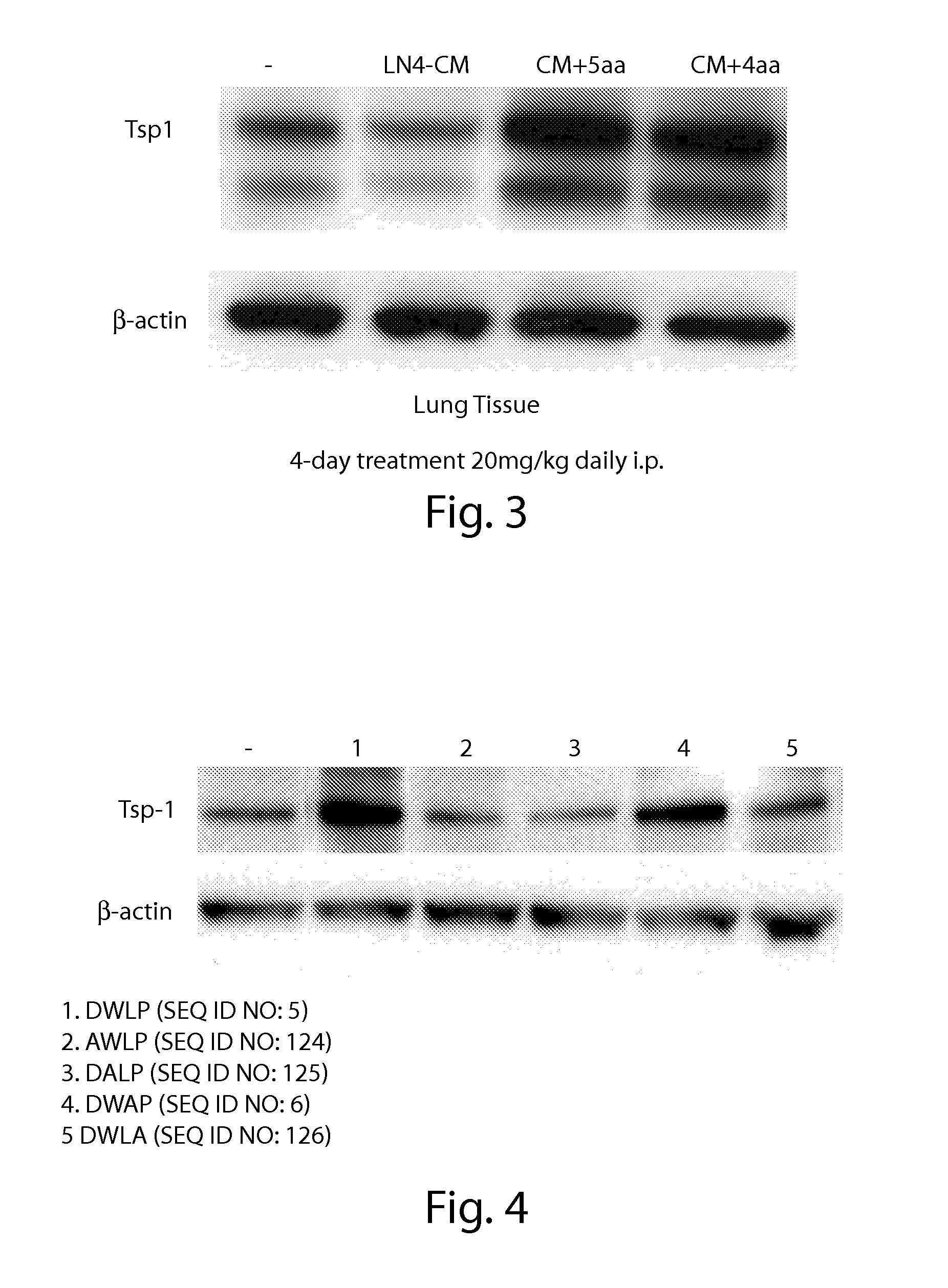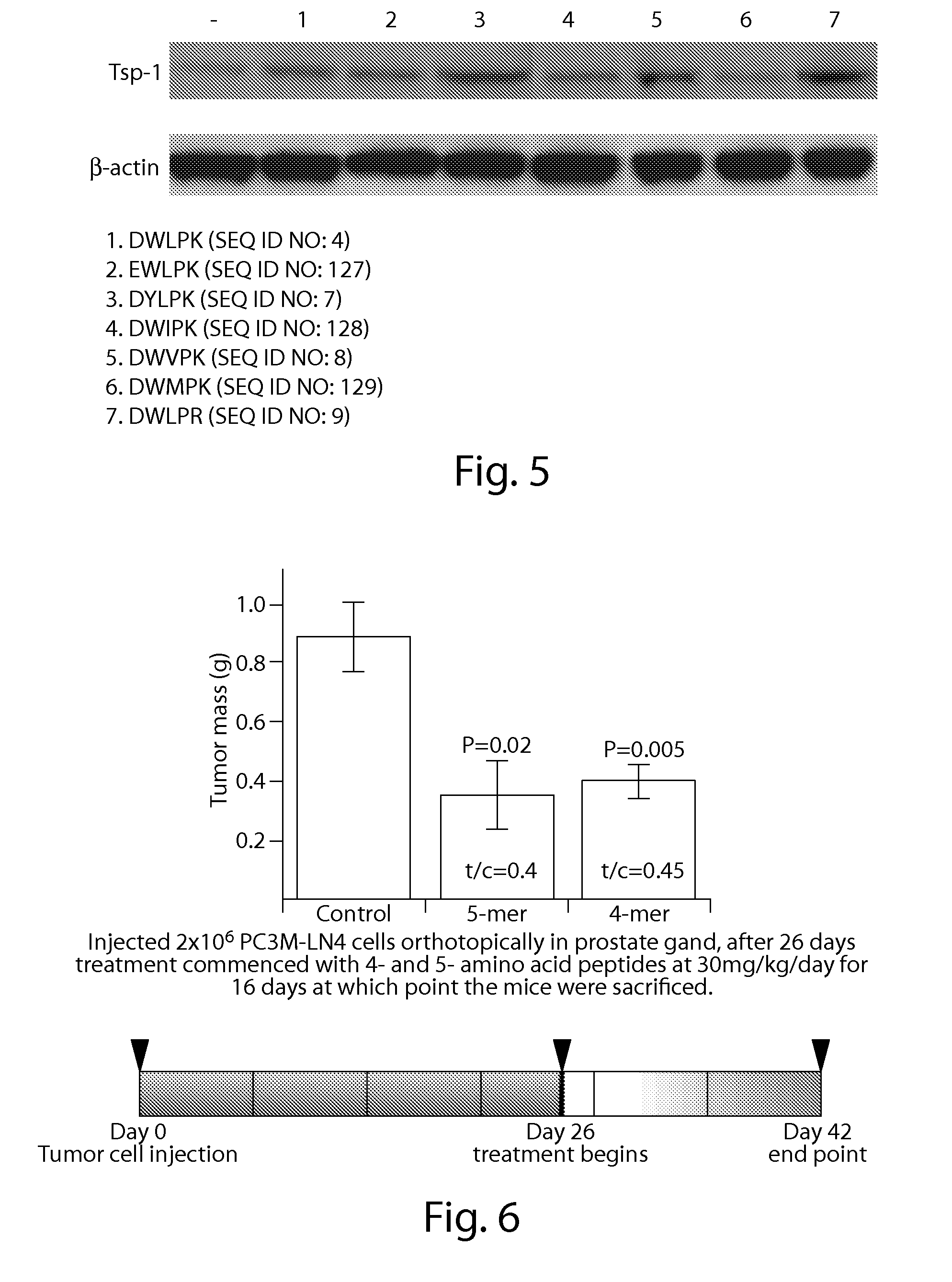Saposin-a derived peptides and uses thereof
- Summary
- Abstract
- Description
- Claims
- Application Information
AI Technical Summary
Benefits of technology
Problems solved by technology
Method used
Image
Examples
example 1
Identification of Saposin A Derived Polypeptides with Saposin A Activity
Experimental Procedures
Creation of Prosaposin Truncation Mutants
[0360]All prosaposin coding fragments were created by PCR amplification using the common 5′ primer: 5′-ggcggcgtcgacATGTACGCCCTCTTCCTCC-3′ (SEQ ID NO: 30). The saposin A region was created using the 3′ primer: ggcgcctctagaAGAGACTCGCAGAGGTTGAG (SEQ ID NO: 31). The saposin AB region was created using the 3′ primer: ggcgcctctagaACCTCATCACAGAACCC (SEQ ID NO: 32). The saposin ABC region was created using the 3′ primer: ggcgcctctagaGCCAGAGCAGAGGTGCAGC (SEQ ID NO: 33). The PCR products were digested with Sal1 and Xba1 and cloned into pDNR-Dual (Clontech). The saposin regions were then cloned into pLP-CMVNeo using the Creator cloning system (Clontech). Prosaposin truncation constructs were used to transiently transfect PC3M-LN4 cells.
Saposin A Peptide Scanning
[0361]Seven overlapping 20(21)-amino acid peptides spanning the length of saposin A were synthesize...
example 2
Further Peptide Data
Methods
[0374]Human and Mouse Plasma and Mouse Blood
[0375]Male human plasma (Lot # BCE012312PM1, K3 EDTA) was obtained from BioChemed Services (Winchester, Va.) and was stored at −80° C. Young adult male Swiss-Webster mice were obtained from Taconic Farms, and were anesthetized with carbon dioxide, and exsanguinated by cardiac puncture. Blood was collected in to tubes containing K2 EDTA and cooled in ice. Plasma was prepared by centrifugation for 10 min at 3000 g and 4° C. Mouse plasma and blood was used on the day of harvest.
[0376]Preparation of Standard Curves
[0377]Quenched matrix (human and mouse plasma) samples were prepared from one volume of plasma precipitated with three volumes of 9:1 acetonitrile:water at 4° C. and centrifuged for 10 min at 3000 g and 4° C., and the supernatant was used to prepare standard curve samples. A stock solution of 20 mg / mL Ac-DWLP-amide (SEQ ID NO: 133, Ac=acetyl group, amide=amide group) and 20 mg / mL Ac-dWlP-amide (SEQ ID NO: 1...
example 3
Further Peptide Data
[0389]Methods: 18 C57Bl6 mice were injected with Ac-dWlP-amide (SEQ ID NO: 132) at a dose of 30 mg / kg in a volume of 100 μL via intraperitoneal (i.p) injections in serum starved conditioned media from PC3M-LN4 prostate cancer cells. The mice were separated into 6 groups of 3 mice, which were euthanized 4, 8, 16, 24, 48 and 72 hours after peptide injection. Subsequent to euthanasia the lungs were harvested from the mice, minced in a dounce homogenizer and lysed using RIPA buffer on ice for 30 minutes. The tissue lysates were then centrifuged at 13,000 rpm in a table top minicentrifuge for 20 minutes at 4° C. The supernatants were then removed and mixed with 4× loading buffer and 100 μg of total protein (based on Bio-Rad assay) was loaded and electrophoresed on a 4-12% gradient bis-tris gel. Following electrophoresis the proteins were transferred to an Immobilon-P membrane (Millipore) for 2 hours at 200V. The membranes were then blocked in 5% non-fat milk in PBS-T ...
PUM
| Property | Measurement | Unit |
|---|---|---|
| Fraction | aaaaa | aaaaa |
| Fraction | aaaaa | aaaaa |
Abstract
Description
Claims
Application Information
 Login to view more
Login to view more - R&D Engineer
- R&D Manager
- IP Professional
- Industry Leading Data Capabilities
- Powerful AI technology
- Patent DNA Extraction
Browse by: Latest US Patents, China's latest patents, Technical Efficacy Thesaurus, Application Domain, Technology Topic.
© 2024 PatSnap. All rights reserved.Legal|Privacy policy|Modern Slavery Act Transparency Statement|Sitemap



